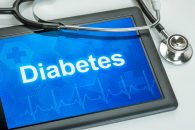Read more about the new advances in diabetes technology and the new diabetes technology
The sweeping influence of Technology may be changing the dynamics of diabetes management. In a Dulce randomized controlled study utilizing digital text messages as a diabetes management tool, participants saw notable improvements in A1C tests that measure blood glucose levels. The low-cost factor of this diabetes technology makes it particularly beneficial for patients with economic or physical barriers to regular health care services.
The significance of these innovations in diabetes treatment is the potential impact on the global prevalence of diabetes mellitus. Based on the statistics from the American Diabetes Association, an estimated 1.4 million Americans are diagnosed with diabetes every year. The most recent World Health Organization (WHO) studies also reveal an alarming and steady increase in the occurrence of diabetes. The WHO report indicate that between 1980 and 2014 there was an increase in diabetes diagnosis from 4.7% to 8.5% among adults 18 years and over.
Diabetes Technology Tests
Clinical researchers from the Scripps Whittier Diabetes Institute conducted a text based clinical trial with 126 participants between October 2012 and August 2014. The focus, according to clinicians, was to test the use of text messages as an economic way to help low income participants to control their glucose intake. Participants selected for this study were recruited from Neighborhood Healthcare; a non-profit community based health organization with medical clinics in Southern California.
According to the Scripps Whittier Diabetes Institute, the study group consisted primarily of low-income Hispanics with Type 2 diabetes. These individuals were also predominantly middle-aged Mexican born women with less than a ninth-grade education. Due to their economic status, participants reportedly had problems accessing health care services on a routine basis and were mostly uninsured or MediCal recipients.
All participants involved in the study:
- Viewed a 15-minute diabetes educational video,
- Received a blood glucose meter with use instructions,
- Given voluntary visits with a diabetes health care team that included a primary care physician, certified diabetes educator and group diabetes self-management education,
- Used their own cell phones, or were given one for purposes of this study,
- Received a nominal monthly stipend to cover the cost of study texts.
From the pool of participants, 63 individuals were randomly assigned to a study group. At the beginning of the study, the members in the study group received two to three short text messages each day that tapered off towards the end of the trial. Over the course of the study, the participants received an average of 354 texts covering educational, motivational and actionable messages or reminders such as:
- Tick, tock. Take your medication at the same time every day!
- Time to check your blood sugar. Please text back your results.
- Use small plates! Portions will look larger and you may feel more satisfied after eating.
- It takes a team! Get the support you need — family, friends and support groups can help you to succeed.
The success of this study was determined based on hemoglobin A1C test results. This blood test measures average blood glucose levels over a period of two to three months. The normal AIC levels in healthy individuals without diabetes is below 5.7 percent. The study results for this technology diabetes study that were published by Diabetes Care revealed that:
- The study commenced with a baseline mean A1C of 9.5 percent for the combined participant groups registered.
- Three months into the study, the mean A1C for the group receiving daily texts had improved to 8.5 percent while the control group had a mean A1C of 9.3 percent.
- At the end of the six-month trial, the study group’s mean A1C was still 8.5 percent while the control group registered a mean AIC of 9.4 percent.
- 96% of the study group participants stated that the text messages were instrumental in helping them to managing their diabetes.
- 97% said they would continue receiving Dulce Digital Text messages and would also recommend the program to friends and family.
- Participants who texted in their blood glucose levels more often had better A1C measures than other participants who responded back to researchers via text less frequently. Researchers speculated that better test results were due to the higher level of engagement and participation in the program.
According to 48-year-old study group participant Gloria Favela she saw significant improvements. “As the program continued, my A1C was dropping, and it eventually got to a really healthy level,” she said. She also reported that the text messages worked as a gentle nudge to pay attention to her health that she felt, really worked for her.
Overall, researchers concluded that these finding suggest that this is a simple, inexpensive approach that can enable more people to better manage this condition. Athena Philis-tsimikas, MD and corporate vice president of Scripps Whittier also stated that this new innovation in diabetes treatment “proved to be an effective approach to diabetes management.”

